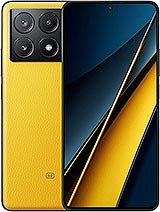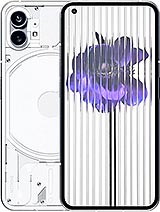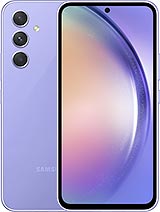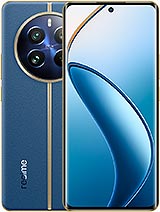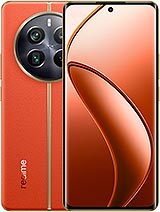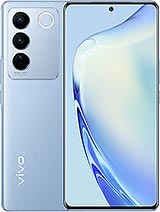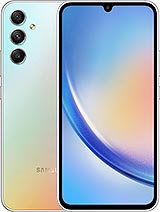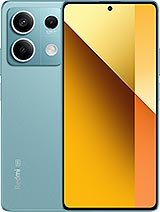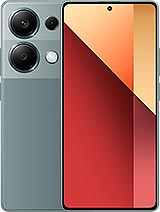Nothing Phone (2a) review

Nothing OS 2.5 on top of Android 14
The Nothing Phone (2a) runs on Android 14 with the latest version of Nothing's custom OS skin on top. That would be Nothing OS 2.5.3 at the time of writing.
The Nothing Phone (2a) gets the same level of software support as the regular Nothing Phone (2). That is to say - three years of software updates and four years of security patches.

Nothing OS continues to be very "clean" in terms of feature customization and thus near to AOSP. However, at the same time, it is heavily visually customized with a very distinct look and feel. Nothing's signature dot matrix font and overall aesthetic surrounding it permeate the UI. You get a whole slew of custom widgets (24 in total) from everything from clocks and calendars to contacts and weather, so you can retain that consistent Nothing look.

The notification shade and quick toggles are also as much AOSP as they are Nothing. With Nothing OS 2.5, the two big quick toggle areas at the top have now been changed from circles to squares with rounded corners.

Another relatively new addition to Nothing OS is the custom icon pack that, expectedly, is monochrome and has a consistent look.
There is an Always-on Display available, and it, expectedly, sticks to the general aesthetic as well. There are a slew of lockscreen widgets to choose from as well.

Nothing OS has a Monochrome UI option for those wanting an even more exclusive, unique experience. It is part of the Do Not Disturb and Bedtime routines, but you can set it up for you however you prefer. The monochrome UI is a display option, and it doesn't affect the UI exactly, so if you take a screenshot or a picture, it will still be colorful.
In a bid to innovate and be a part of the "trendy crowd," Nothing is constantly trying its hand at some advanced and experimental features. Our review unit is missing the "Connect to Tesla" menu that the Nothing Phone (2) had, so perhaps that didn't pan out. However, the experimental AirPods support is still present. So is the "Glyph Progres" feature that integrates with third-party apps and allows you to track your Uber's progress from the back of your phone.
There are some less experimental hardware OS-level integrations available as well, like through the Nothing X app, which supports a number of headphones like the Ear (1), Ear (stick), Ear (2) and CMF Buds, Neckband Pro and Buds Pro.

The most custom aspect of the Nothing OS is the inclusion of the Glyph Interface, which controls the LEDs on the back of the phone. First, the feature is optional, so you can just turn it off or schedule it if it bothers you at night. You can also adjust the brightness of the LEDs, which can get seriously bright, even at the default medium brightness.
At present, the Glyph Interface can be used primarily for notifications and alerts. The Glyph Menu contains Brightness, Ringtones, Notifications, Flip to Glyph, Glyph Timer, Composer shortcut for custom Glyph ringtones, and Visual Feedback for Volume control, Charging meter, Google Assistance, Music Visualizer and third-party apps (Uber, Zomato and Google Calendar for now).
You can check out a more in-depth explanation of all of the neat Glyph options in our Nothing Phone (2) review. These haven't really changed that much.

As far as bloatware is concerned, the Phone (2a) has none of it to speak of, assuming you don't count the ever-increasing mandatory Google apps as bloatware. The only custom apps on the phone are the Camera app, the Composer app, the Weather app and a Recorder app. These expectedly share a cohesive design. The Nothing X app was pre-installed on our unit as well, but if yours is missing, it is available on the Google Play store.
Benchmarks and performance
The Nothing Phone (2a) uses a Dimensity 7200 chipset that Nothing says has been co-engineered and customized with the help of MediaTek for "the best performance and optimal power consumption". MediaTek does already have a history of "customizing" the Dimensity 7200, notably with the Dimensity 7200 Ultra inside the Xiaomi Redmi Note 13 Pro+. Nothing says the chip should be better tuned for power draw from the display IC and modem and offer up to 10% better efficiency. To be perfectly honest, we don't see any apparent customization beyond that since it reports the expected stock clocks on the Nothing Phone (2a).

That is not to say that the Dimensity 7200 is a bad chip. On the contrary, it is a solid midranger made on a modern TSMC 4nm N4P process. The CPU is rocking two Cortex-A715 cores, clocked at up to 2.8 GHz and six Cortex-A510 ones, working at up to 2.0 GHz. The onboard GPU is a Mali-G610 MC4.
In most markets, the Nothing Phone (2a) has two memory and storage tiers. There is a base 8GB/128GB model and a 12GB/256GB one. India will also get an exclusive 8GB/256GB variant.
Our review unit is the top-tier 12GB/256GB. Nothing does not reveal what type of storage the Phone 2(a) is equipped with. Running the storage benchmark in Antutu returned storage speeds that seem to be in line with UFS 2.1 type of storage.
On to some benchmarks, starting with CPU and GeekBench. First, let's address the whole "Pro" situation. Any customization that might have taken place was not in the CPU department since the Dimensity 7200, 7200 Pro, and 7200 Ultra perform pretty much the same. In more general terms, you get about as much relative performance as from a Dimensity 7030 or Dimensity 1080, which is not overly impressive but still enough to offer a perfectly decent modern experience. The Snapdragon 6 Gen 1 and 7s Gen 2 aren't too far ahead in terms of CPU performance either, and neither is the Samsung Exynos 1380.
That being said, the Snapdragon 778G+ in the original Nothing Phone (1) offers notably better multi-core performance than the Dimensity 7200 Pro inside the Nothing Phone (2a). And the Nothing Phone (2) with its Snapdragon 8 Gen 1 is further ahead still. If you shop around, you can get much more powerful hardware within the same price bracket as the Nothing Phone (2a). On a more positive note, as far as single-core performance goes, the Dimensity 7200 holds its own really well, which is great news for general app and OS responsiveness.
AnTuTu is a much more compound benchmark that also includes GPU and memory tests. Looking at the older v9 results, we can see the Nothing Phone (2a) and the original Nothing Phone (1) neck to neck. Of course, the Nothing Phone (2) posts substantially better scores. Still, the Nothing Phone (2a) holds its own very well in this compound benchmark.
Finally, we have graphics performance and 3DMark, where the Dimensity 7200 Pro and its Mali-G610 MC4 GPU prove to be a perfectly adequate "middle-of-the-road" performer in this relative price bracket. While you can get more frames for your buck, you can't realistically do much better than what the Nothing Phone (2a) offers.
We remind you that 3DMark does off-screen rendering, which means that the display resolution of each device is not taken into account, making the scores more of a ranking between chipsets as opposed to devices. Though with most devices in the category having the same resolution, the ranking would apply to the devices as well.
We've discontinued GFXBench graphics benchmarking as the app is often banned/blacklisted on the phones we receive for review. The graphics performance ranking in 3D Mark is just as meaningful, so we suggest you refer to that one instead.
In more practical terms, the Nothing Phone (2a) runs its Nothing OS environment perfectly smoothly with no obvious hiccups, stutters or slowdowns. It also handles daily tasks with ease and is good for some casual gaming.
Thermal throttling
The Dimensity 7200 Pro is clearly a very power-efficient chip, as evidenced by the excellent battery life. It also doesn't run particularly hot. Either that or Nothing is managing whatever heat there is quite masterfully through the use of its 3200 mm2 vapor chamber and 12,000 mm2 overall cooling area with a 0.11m thick graphite layer.
It all comes together nicely, and the Nothing Phone (2a) offers great sustained performance with very few losses, even after a full hour of torture testing.
Reader comments
- JJ
- 06 May 2024
- vG4
Install google gallery . that simple it is.
- Prabhu
- 30 Apr 2024
- at2
I am using since march Its doesn't have gallery and it's not user friendly
